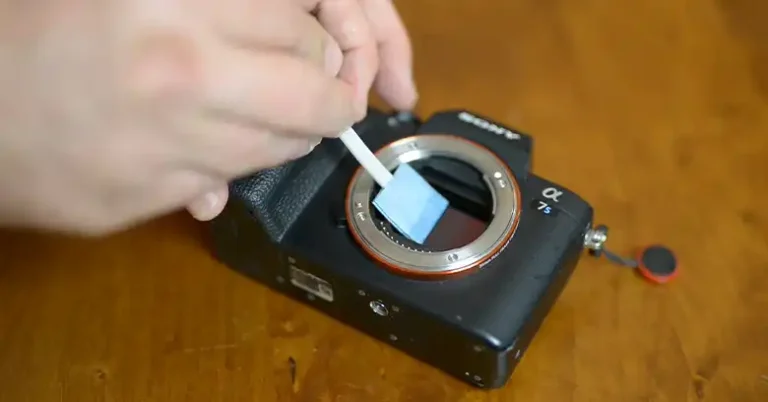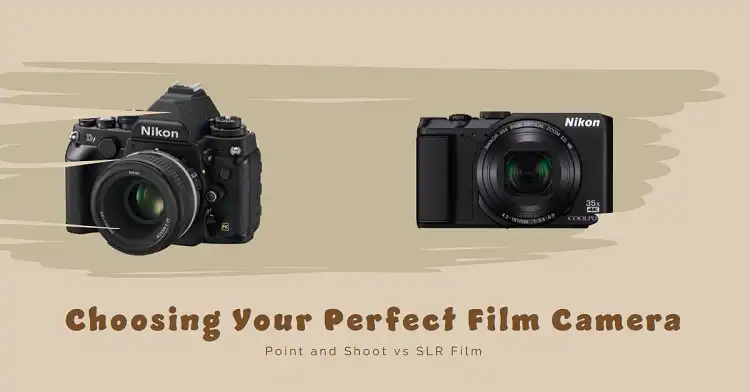How Does Aperture Affect Depth of Field?

Aperture, simply put, is the opening in your camera’s lens that allows light to pass through. Depth of field, on the other hand, refers to the zone of acceptable sharpness in an image, ranging from the closest point in focus to the farthest point that appears acceptably sharp.
The relationship between these two elements is inverse and profound: as you adjust your aperture, you directly influence the depth of field in your photograph. A wider aperture (represented by a smaller f-number like f/1.8) creates a shallower depth of field, while a narrower aperture (like f/16) results in a deeper depth of field.
Below we’ll explain the fundamentals of aperture and depth of field and how they complement each other in photography. Let’s go.
How Camera Aperture Works
To truly grasp how aperture affects depth of field, we need to start with a solid understanding of aperture itself. Imagine your camera lens as a window. The aperture is like adjustable blinds on that window, controlling how much light passes through at any given moment.

Aperture is measured in f-stops, with smaller numbers representing wider openings and larger numbers indicating narrower openings. This can seem counterintuitive at first, but think of it this way: f/2.8 allows more light in than f/11. A helpful analogy is to consider fractions – 1/2.8 is larger than 1/11, just as an f/2.8 aperture is wider than f/11.
Here’s a quick reference table to help visualize common aperture sizes:
| Aperture | Opening Size | Relative Light Gathered |
| f/1.4 | Very wide | 16x |
| f/2.8 | Wide | 4x |
| f/5.6 | Medium | 1x (baseline) |
| f/11 | Narrow | 1/4x |
| f/22 | Very narrow | 1/16x |
As you can see, each step represents a doubling or halving of the light entering the camera. This control over light is crucial, but it’s the effect on depth of field that truly unleashes creative possibilities.
How Depth of Field Works
Now that we’ve covered aperture, let’s dive into depth of field. Imagine taking a photo of a flower in a field. The depth of field determines whether only the flower is in sharp focus with a blurry background, or if the entire scene from the foreground to the distant hills is crisp and clear.

Depth of field is influenced by several factors, but aperture is the primary control a photographer has over this effect. A shallow depth of field keeps only a small portion of the image in focus, while a deep depth of field maintains sharpness across a greater distance.
The concept of the “circle of confusion” is key to understanding how depth of field works. This refers to the largest blur spot that still appears as a point to the human eye. When light rays from the subject hit the camera sensor, they form these circles. The size of these circles determines whether we perceive an area as in focus or blurry.
A wider aperture creates larger circles of confusion outside the focal plane, resulting in a shallower depth of field. Conversely, a narrower aperture produces smaller circles of confusion, leading to a deeper depth of field.
How Aperture and Depth of Field is Related
The relationship between aperture and depth of field is inverse and predictable. As you open up your aperture (moving to a lower f-number), you decrease the depth of field. This means less of your image will be in sharp focus. On the flip side, as you close down your aperture (moving to a higher f-number), you increase the depth of field, bringing more of the scene into focus.
Let’s break this down with some practical examples:
- Portrait Photography (f/1.8)
A wide aperture like f/1.8 creates a very shallow depth of field. This is perfect for portraits where you want to isolate your subject from the background. The subject’s eyes will be tack-sharp, while the background melts into a pleasing blur.
- Group Photo (f/5.6)
For a small group, an aperture around f/5.6 might be ideal. It provides enough depth of field to keep everyone in focus, while still offering some background separation.
- Landscape Photography (f/11)
When capturing vast scenes, photographers often opt for narrower apertures like f/11 or f/16. This ensures that both foreground elements and distant mountains remain sharp.
- Macro Photography (f/16)
Extremely close-up shots require very narrow apertures to achieve sufficient depth of field. Even at f/16, the area in focus might only be a few millimeters deep.
Remember, these are general guidelines. The specific aperture you choose will depend on various factors, including the focal length of your lens and the distance to your subject.
What Other Things Affect Depth of Field
While aperture is the primary factor in controlling depth of field, it’s not the only one. Other elements come into play, and understanding them will give you even greater control over your images:
- Focal Length: Longer focal lengths (telephoto lenses) naturally produce a shallower depth of field compared to wider focal lengths. A 200mm lens at f/4 will have a much shallower depth of field than a 24mm lens at f/4.
- Subject Distance: The closer you are to your subject, the shallower your depth of field becomes. This is why macro photography often requires extremely narrow apertures to achieve sufficient depth of field.
- Sensor Size: Larger sensors (like full-frame) produce a shallower depth of field than smaller sensors (like APS-C or Micro Four Thirds) at the same aperture and focal length.
Here’s a table illustrating how these factors interact:
| Factor | Effect on Depth of Field |
| Wider Aperture | Decreases |
| Narrower Aperture | Increases |
| Longer Focal Length | Decreases |
| Shorter Focal Length | Increases |
| Closer to Subject | Decreases |
| Further from Subject | Increases |
| Larger Sensor | Decreases |
| Smaller Sensor | Increases |
While these factors all play a role, aperture remains the most flexible and accessible way for photographers to control depth of field in real-time.
How to Use Aperture & Depth of Field in Your Photography
Understanding the relationship between aperture and depth of field opens up a world of creative possibilities. Let’s explore how this knowledge applies to different types of photography:
Portrait Photography
In portraiture, a shallow depth of field is often desirable to make the subject stand out. Using a wide aperture like f/1.8 or f/2.8 blurs the background, creating a dreamy, bokeh-rich effect that draws attention to the subject’s face. This technique is particularly effective for headshots and environmental portraits where you want to separate the person from their surroundings.
Landscape Photography
Landscape photographers typically aim for a deep depth of field to capture sharp details from the foreground to the horizon. Apertures like f/11 or f/16 are common choices. However, there are times when a landscape photographer might opt for a wider aperture to isolate a specific element, like a lone tree against a mountain range.
Macro Photography
Macro photography presents unique challenges when it comes to depth of field. When focusing on subjects just centimeters away from the lens, even narrow apertures like f/16 might only provide a few millimeters of sharp focus. This is where techniques like focus stacking (combining multiple images with different focus points) come into play.
Street Photography
Street photographers often work with changing scenes and fleeting moments. Many prefer to use a moderate aperture like f/5.6 or f/8, which provides enough depth of field to keep most of the scene in focus while still allowing for some background separation.
By understanding how aperture affects depth of field in these different scenarios, you can make intentional choices that enhance your photographic vision.
Frequently Asked Questions
Does ISO affect depth of field?
No, ISO does not directly affect depth of field. ISO is a measure of your camera sensor’s sensitivity to light. While changing ISO can affect the overall exposure of your image, it doesn’t influence the depth of field. However, using a higher ISO might allow you to use a narrower aperture in low light conditions, indirectly affecting depth of field.
Does aperture affect field of view?
Aperture doesn’t affect the field of view in terms of how wide an area your lens captures. The field of view is determined by the focal length of your lens. However, aperture can affect how much of that field appears in focus, which might give the impression of a changed field of view.
What is f/2.8 depth of field?
An aperture of f/2.8 is considered relatively wide and typically produces a shallow depth of field. The exact depth of field at f/2.8 depends on other factors like focal length and subject distance. For example, on a 50mm lens focused at 5 feet, f/2.8 might give you about 6 inches of depth of field. This makes f/2.8 popular for portraits and low-light photography.
Does aperture affect autofocus?
Aperture can indirectly affect autofocus performance. Most cameras autofocus with the aperture wide open for maximum light and then stop down to the selected aperture when taking the photo. In low light, a lens with a wider maximum aperture (like f/1.8) will allow more light for the autofocus system to work with, potentially improving its speed and accuracy.
Which aperture is sharpest?
The sharpest aperture varies by lens but is typically 2-3 stops down from the widest aperture. For many lenses, this falls in the f/5.6 to f/11 range. This “sweet spot” provides the best balance between depth of field and diffraction (a slight softening effect that occurs at very narrow apertures). However, it’s important to test your specific lenses to find their sharpest apertures.
Is a lower f-stop better?
A lower f-stop (wider aperture) isn’t inherently better or worse – it depends on your photographic goals. Lower f-stops allow more light and create a shallower depth of field, which can be great for low-light situations or when you want to isolate a subject. However, higher f-stops (narrower apertures) are often preferred for landscapes or group shots where you want more of the scene in focus.
Wrapping Up
Aperture’s influence on depth of field is a fundamental concept in photography, one that opens up a world of creative possibilities. By controlling what’s in focus and what isn’t, you guide your viewer’s eye and shape the story your image tells. Whether you’re isolating a portrait subject with a dreamy background blur or capturing the sweeping details of a vast landscape, your choice of aperture plays a crucial role.






